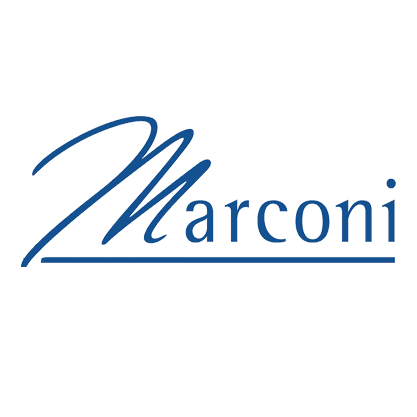
Home » Marconi » Marconi SMA/MSH » Marconi MSH-53
The Marconi MSH‑53 is a high-integrity optical regenerator designed to extend the operational range of SDH (Synchronous Digital Hierarchy) transmission networks by restoring signal quality over long fiber links. Built to serve as a passive yet intelligent relay point, the MSH‑53 plays a crucial role in maintaining synchronization, framing integrity, and optical power levels between distant SDH nodes, especially where signal degradation due to distance, attenuation, or dispersion could impact service quality.
Developed by Marconi as part of its broader MSH and SMA product series, the MSH‑53 is typically used in long-haul backbone, metro transmission rings, or regional aggregation networks where the signal must be restored mid-span to ensure reliability. It operates at STM‑1, STM‑4, or STM‑16 levels (depending on the deployed variant), and fits seamlessly into SDH architecture without introducing latency or service disruption.
Unlike active switching or multiplexing nodes, the MSH‑53 is dedicated to optical signal regeneration only—it does not modify payloads or cross-connect traffic. This dedicated focus allows the unit to deliver highly reliable performance with minimal configuration or operational overhead. Once deployed, the MSH‑53 functions autonomously, offering a maintenance-free design that contributes to service continuity and reduced total cost of ownership.
At Carritech, we continue to support service providers who operate Marconi MSH‑53 modules in their legacy infrastructure. Through our extensive sourcing capabilities, we locate and supply fully tested MSH‑53 units, as well as compatible components such as power systems and optical connectors. Whether used as part of a planned expansion, spare provisioning strategy, or fault replacement, our goal is to ensure the long-term availability and performance of your SDH network assets.
Dedicated Optical Regeneration: Specifically designed to regenerate weakened or degraded SDH signals at the optical layer, helping to maintain framing, clock synchronization, and transmission stability over extended fiber routes.
Supports Multiple SDH Line Rates: Depending on the model and configuration, the MSH‑53 can support STM‑1 (155 Mbps), STM‑4 (622 Mbps), and STM‑16 (2.5 Gbps) optical transport, ensuring compatibility with a broad range of SDH deployment environments.
Passive, Transparent Operation: The unit operates without altering the SDH payload or structure, allowing traffic to pass through unaffected while the physical signal is fully regenerated to its original strength and timing accuracy.
Compact, Modular Design: Intended for installation in a variety of telecom environments, including roadside enclosures, indoor racks, and central offices, the MSH‑53’s form factor supports efficient space usage and flexible deployment.
Carrier-Grade Durability: Built to rigorous telecom standards, the MSH‑53 offers a high mean time between failures (MTBF), minimal power consumption, and resilient performance even in less-than-optimal operating conditions.
Seamless Network Integration: The MSH‑53 is designed to integrate directly into Marconi’s SDH transport ecosystem, though it can also be deployed between different vendor platforms thanks to its standards-based optical handling.
Zero Maintenance Architecture: Once installed and configured, the MSH‑53 requires no active management, enabling operators to reduce maintenance workloads and operational complexity.
Function: Optical signal regenerator for SDH networks (no payload processing or switching)
Supported Line Rates: STM‑1 (155 Mbps), STM‑4 (622 Mbps), STM‑16 (2.5 Gbps)
Optical Interfaces:
Typically dual-port optical I/O
Operates on standard telecom wavelengths (1300 nm or 1550 nm)
Optical budget suitable for long-distance spans, typically up to 50–80 km per segment
Signal Regeneration Capabilities:
Full reshaping, retiming, and reamplification (3R regeneration)
SDH framing preserved
Pointer processing and jitter cleaning included to ensure network timing stability
Installation:
Deployed as a module within an SDH shelf or as a standalone unit, depending on variant
Compatible with Marconi SMA or MSH rack systems
Power Supply:
Draws power from -48 VDC telecom input
Low energy consumption (~15–30W typical, model dependent)
Supports dual-feed configurations for redundancy
Cooling:
Passive or fan-assisted cooling depending on chassis
Designed for consistent performance in rack-mounted enclosures or passive relay sites
Environmental Conditions:
Operating temperature: 0°C to +45°C (standard telecom range)
Humidity: 5% to 95%, non-condensing
Vibration and shock tolerant for use in roadside or unmanned locations
Management Requirements:
Operates independently with no remote management
Installation and diagnostics handled via local craft port or optical loop testing tools
Compliance:
Built to ITU-T SDH standards
Conforms to ETSI, CE, and Telcordia specifications for safety, emission, and telecom installation
| Time Period | Brand / Company | Role / Notes |
|---|---|---|
| Early 2000s – 2006 | Marconi Communications / Marconi Corporation plc | The MSH‑53 was introduced as part of Marconi’s transport solutions portfolio to extend SDH transmission reach and signal quality between nodes. |
| 2006 – Present | Ericsson (legacy support only) | Following its acquisition of Marconi’s telecom division, Ericsson ceased active development of the MSH‑53 but provided limited legacy support under existing network contracts. |
| Present (Secondary Market) | Independent Resellers & Support Specialists (e.g., Carritech) | Carritech supplies fully tested MSH‑53 regeneration modules and related hardware to support legacy network maintenance, expansion, or replacement, ensuring continued service in long-haul and metro SDH infrastructures. |
No files found.
From expert maintenance and repair to reliable part sourcing and technical consultation, we provide comprehensive support for every stage of your network’s lifecycle. Whether you’re extending the life of legacy systems or integrating with modern infrastructure, our team ensures seamless, efficient, and cost-effective solutions—so you can focus on performance, not problems.